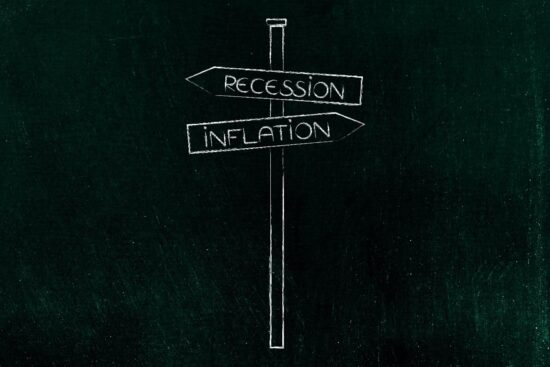Economic stability is a delicate balancing act influenced by various factors, with inflation and recession being two of the most significant forces at play. Both represent opposing ends of the economic spectrum, each with profound impacts on investment decisions and economic planning. Inflation, characterized by rising prices and diminishing purchasing power, contrasts sharply with a recession, marked by declining economic activity and increased unemployment. Understanding the interplay between these trends is essential for businesses, policymakers, and investors alike. As Christopher Nicak of Kentucky points out, analyzing these market signals can provide valuable insights into future economic conditions and opportunities.
The Nature of Inflation: A Double-Edged Sword
Inflation occurs when the demand for goods and services outpaces their supply, leading to higher prices. While moderate inflation is often seen as a sign of a growing economy, excessive inflation can erode consumer purchasing power and destabilize markets. For investors, inflation presents both challenges and opportunities. On one hand, it diminishes the real value of cash holdings and fixed-income investments. On the other hand, assets like real estate, commodities, and certain stocks often perform well in inflationary environments.
Businesses must navigate inflation carefully, balancing cost increases with the need to remain competitive. For example, higher input costs can lead to price adjustments, but if these increases outpace consumer tolerance, demand may decline. Additionally, inflationary pressures often prompt central banks to raise interest rates, which can cool economic growth but also affect borrowing costs for both businesses and individuals.
Recession: The Chill of Economic Contraction
In contrast, a recession signals a period of economic contraction. Reduced consumer spending, lower business investment, and rising unemployment characterize these downturns. While recessions are often viewed negatively, they are also a natural part of the economic cycle, allowing for corrections and adjustments in overheated markets.
For investors, recessions often necessitate a shift in strategy. Defensive sectors like healthcare and utilities typically offer more stability, while high-risk assets may underperform. Similarly, businesses must adapt by optimizing operations, cutting costs, and exploring ways to sustain demand in a challenging environment. For policymakers, mitigating the effects of a recession involves fiscal and monetary interventions, such as stimulus packages and interest rate cuts, to revive economic activity.
Inflation and Recession: Interconnected Forces
Despite their differences, inflation and recession are interconnected. For instance, efforts to combat high inflation through interest rate hikes can inadvertently trigger a recession by dampening consumer and business spending. This dynamic underscores
the importance of nuanced economic planning and policy decisions.
Historical examples illustrate the delicate balance between these forces. The 1970s, often referred to as the era of “stagflation,” saw high inflation coupled with stagnant economic growth, challenging traditional economic theories. More recently, the global financial crisis of 2008 demonstrated how rapid policy responses could stabilize markets and prevent prolonged recessions, albeit with long-term inflationary implications.
Impact on Investment Decisions
Investment strategies must account for the potential impacts of inflation and recession. In inflationary periods, equities in sectors like energy and consumer staples often prove resilient, as these industries can pass rising costs onto consumers. Conversely, during a recession, fixed-income securities like government bonds tend to be safer options, providing steady returns when market volatility increases.
Diversification remains a cornerstone of investment planning in both scenarios. By spreading investments across asset classes, geographies, and industries, investors can mitigate risks and capitalize on emerging opportunities. Moreover, understanding macroeconomic indicators—such as inflation rates, GDP growth, and unemployment—can help investors anticipate market trends and make informed decisions.
Economic Planning in the Face of Uncertainty
For governments and businesses, navigating the complexities of inflation and recession requires strategic foresight and adaptability. Fiscal policies, including tax adjustments and public spending, play a crucial role in shaping economic outcomes. Similarly, monetary policies implemented by central banks—such as interest rate changes and quantitative easing—directly influence liquidity, credit availability, and consumer confidence.
Businesses must also prioritize resilience by building robust supply chains, managing costs effectively, and maintaining financial flexibility. These measures enable organizations to withstand economic shocks and seize opportunities as conditions improve. Furthermore, fostering innovation and embracing digital transformation can enhance competitiveness in an ever-evolving economic landscape.
Balancing Act: The Path to Stability
Achieving economic stability requires a delicate balance between fostering growth and controlling inflationary pressures. Policymakers must carefully calibrate their responses to avoid tipping the economy into recession while addressing inflationary concerns. This challenge underscores the importance of proactive monitoring and timely interventions.
For individuals, understanding the dynamics of inflation and recession can inform personal financial decisions. Whether it involves adjusting savings strategies, diversifying investment portfolios, or reevaluating career prospects, staying informed about economic trends is vital for long-term financial security.
Conclusion: Embracing the Uncertainty
Inflation and recession are integral components of the economic cycle, each presenting unique challenges and opportunities. By understanding their implications and interactions, stakeholders can navigate these trends effectively, ensuring resilience and adaptability in the face of uncertainty. As history demonstrates, periods of economic turmoil often pave the way for innovation and growth, reinforcing the importance of strategic planning and informed decision-making in shaping a stable and prosperous future.
